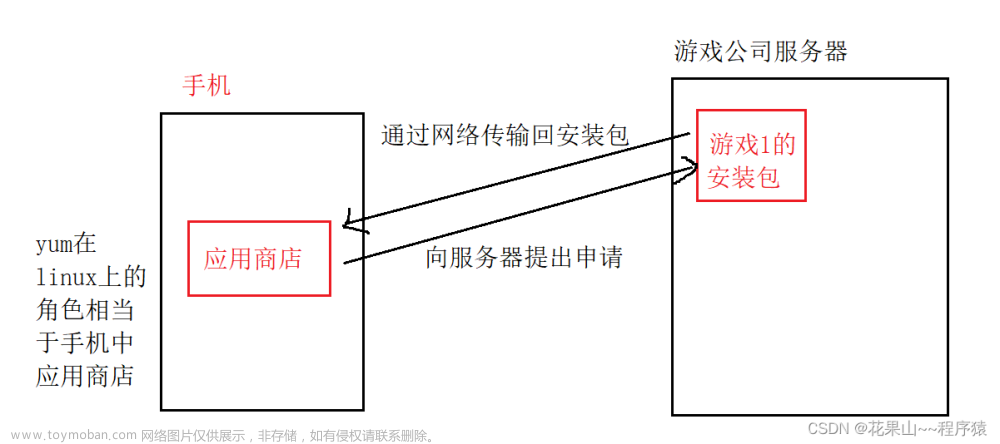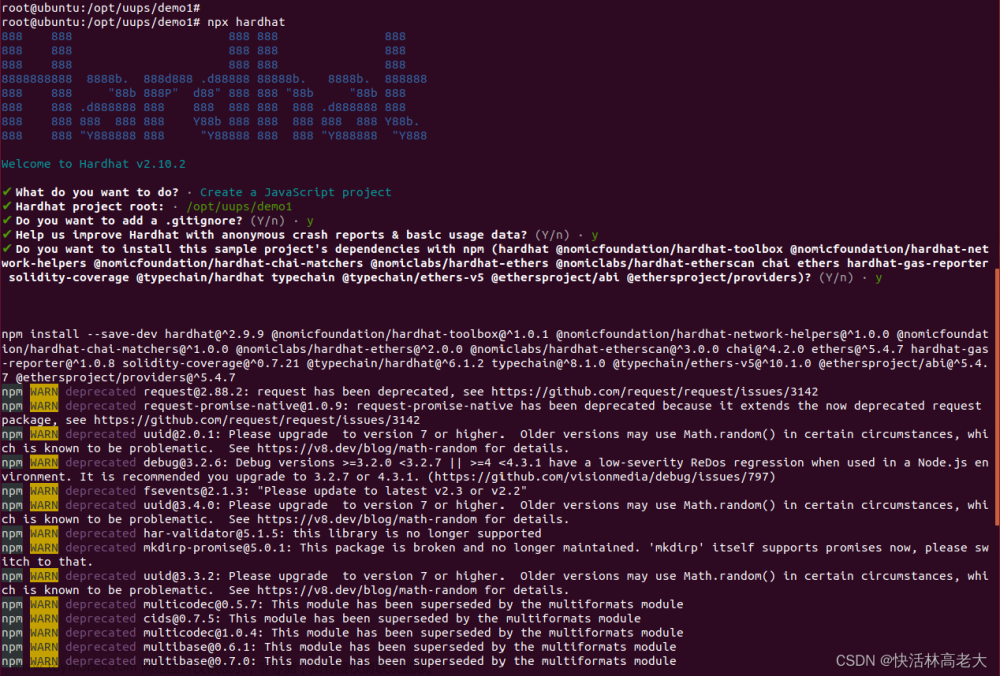1、概述
GoRoutineMap 定义了一种类型,可以运行具有名称的 goroutine 并跟踪它们的状态。它防止创建具有相同名称的多个goroutine,并且在上一个具有该名称的 goroutine 完成后的一段退避时间内可能阻止重新创建 goroutine。
使用GoRoutineMap场景:
- 使用协程的方式运行函数逻辑,如果函数成功执行,则退出该协程;如果函数执行报错,在指数退避的时间内禁止再次执行该函数逻辑。
使用GoRoutineMap大体步骤如下:
1)通过goRoutineMap.NewGoRoutineMap(exponentialBackOffOnError bool) GoRoutineMap {....}方法创建GoRoutineMap结构体对象,用于管理goroutine 并跟踪它们的状态;
2)调用GoRoutineMap结构体对象Run(operationName, operation)方法,其能够防止创建具有相同名称的多个goroutine,并使用协程的方式运行函数逻辑,如果函数成功执行,则退出该协程;如果函数执行报错,在指数退避的时间内禁止再次执行该函数逻辑。
注意 1:本文代码基于Kubernetes 1.24.10版本,包路径kubernetes-1.24.10/pkg/util/goroutinemap/goroutinemap.go。
注意 2:概述中涉及的代码会在下文进行详细解释。
2、goroutinemap工具包代码详解
2.1 相关类型详解
GoRoutineMap工具包接口定义:
type GoRoutineMap interface {
// Run adds operation name to the list of running operations and spawns a
// new go routine to execute the operation.
// If an operation with the same operation name already exists, an
// AlreadyExists or ExponentialBackoff error is returned.
// Once the operation is complete, the go routine is terminated and the
// operation name is removed from the list of executing operations allowing
// a new operation to be started with the same operation name without error.
Run(operationName string, operationFunc func() error) error
// Wait blocks until operations map is empty. This is typically
// necessary during tests - the test should wait until all operations finish
// and evaluate results after that.
Wait()
// WaitForCompletion blocks until either all operations have successfully completed
// or have failed but are not pending. The test should wait until operations are either
// complete or have failed.
WaitForCompletion()
IsOperationPending(operationName string) bool
}
goRoutineMap结构体实现GoRoutineMap接口,定义如下:
// goRoutineMap结构体实现GoRoutineMap接口,
type goRoutineMap struct {
// 用于记录goRoutineMap维护协程的状态
operations map[string]operation
// 发生错误时是否指数级补偿
exponentialBackOffOnError bool
// 用在多个 Goroutine 等待,一个 Goroutine 通知(事件发生)的场景
cond *sync.Cond
lock sync.RWMutex
}
// operation结构体对象维护单个goroutine的状态。
type operation struct {
// 是否操作挂起
operationPending bool
// 单个goroutine执行逻辑报错时,实现以指数退避方式
expBackoff exponentialbackoff.ExponentialBackoff
}
ExponentialBackoff结构体包含最后一次出现的错误、最后一次出现错误的时间以及不允许重试的持续时间。
// ExponentialBackoff contains the last occurrence of an error and the duration
// that retries are not permitted.
type ExponentialBackoff struct {
lastError error
lastErrorTime time.Time
durationBeforeRetry time.Duration
}
2.2 GoRoutineMap结构体对象初始化
通过goRoutineMap.NewGoRoutineMap方法创建GoRoutineMap结构体对象,用于管理goroutine 并跟踪它们的状态;
// NewGoRoutineMap returns a new instance of GoRoutineMap.
func NewGoRoutineMap(exponentialBackOffOnError bool) GoRoutineMap {
g := &goRoutineMap{
operations: make(map[string]operation),
exponentialBackOffOnError: exponentialBackOffOnError,
}
g.cond = sync.NewCond(&g.lock)
return g
}
2.3 GoRoutineMap.Run方法代码详解
调用GoRoutineMap结构体对象Run(operationName, operation)方法,其能够防止创建具有相同名称的多个goroutine,并使用协程的方式运行函数逻辑,如果函数成功执行,则退出该协程;如果函数执行报错,在指数退避的时间内禁止再次执行该函数逻辑。
// Run函数是外部函数,是goRoutineMap核心方法,其能够防止创建具有相同名称的多个goroutine,并使用协程的方式运行函数逻辑
// 如果函数成功执行,则退出该协程;如果函数执行报错,在指数退避的时间内禁止再次执行该函数逻辑。
func (grm *goRoutineMap) Run(
operationName string,
operationFunc func() error) error {
grm.lock.Lock()
defer grm.lock.Unlock()
// 判断grm.operations这个map中是否存在具有operationName名称的协程
existingOp, exists := grm.operations[operationName]
if exists {
// 如果grm.operations这个map中已经存在operationName名称的协程,并且existingOp.operationPending==true,说明grm.operations中operationName名称这个协程正在执行函数逻辑,在这期间又有一个同名的
// operationName希望加入grm.operations这个map,此时加入map失败并报AlreadyExistsError错误
if existingOp.operationPending {
return NewAlreadyExistsError(operationName)
}
// 到这步说明名称为operationName名称的协程执行函数逻辑失败,此时判断此协程最后一次失败时间 + 指数退避的时间 >= 当前时间,如果不符合条件的话禁止执行该协程函数逻辑。
if err := existingOp.expBackoff.SafeToRetry(operationName); err != nil {
return err
}
}
// 如果grm.operations这个map中不存在operationName名称的协程 或者 此协程最后一次失败时间 + 指数退避的时间 < 当前时间,则在grm.operations这个map中重新维护此协程(注意,operationPending=true)
grm.operations[operationName] = operation{
operationPending: true,
expBackoff: existingOp.expBackoff,
}
// 以协程方式执行函数逻辑operationFunc()
go func() (err error) {
// 捕获崩溃并记录错误,默认不传参的话,在程序发送崩溃时,在控制台打印一下崩溃日志后再崩溃,方便技术人员排查程序错误。
defer k8sRuntime.HandleCrash()
// 如果执行operationFunc()函数逻辑不报错或者grm.exponentialBackOffOnError=false的话,将从grm.operations这个map中移除此operationName名称协程;
// 如果执行operationFunc()函数逻辑报错并且grm.exponentialBackOffOnError=true,则将产生指数级补偿,到达补偿时间后才能再调用此operationName名称协程的函数逻辑
// Handle completion of and error, if any, from operationFunc()
defer grm.operationComplete(operationName, &err)
// 处理operationFunc()函数发生的panic错误,以便defer grm.operationComplete(operationName, &err)能执行
// Handle panic, if any, from operationFunc()
defer k8sRuntime.RecoverFromPanic(&err)
return operationFunc()
}()
return nil
}
如果给定lastErrorTime的durationBeforeRetry周期尚未过期,则SafeToRetry返回错误。否则返回零。
// SafeToRetry returns an error if the durationBeforeRetry period for the given
// lastErrorTime has not yet expired. Otherwise it returns nil.
func (expBackoff *ExponentialBackoff) SafeToRetry(operationName string) error {
if time.Since(expBackoff.lastErrorTime) <= expBackoff.durationBeforeRetry {
return NewExponentialBackoffError(operationName, *expBackoff)
}
return nil
}
operationComplete是一个内部函数,用于处理在goRoutineMap中已经运行完函数逻辑的协程。
// operationComplete是一个内部函数,用于处理在goRoutineMap中已经运行完函数逻辑的协程
// 如果执行operationFunc()函数逻辑不报错或者grm.exponentialBackOffOnError=false的话,将从grm.operations这个map中移除此operationName名称协程;
// 如果执行operationFunc()函数逻辑报错并且grm.exponentialBackOffOnError=true,则将产生指数级补偿,到达补偿时间后才能再调用此operationName名称协程的函数逻辑
// operationComplete handles the completion of a goroutine run in the
// goRoutineMap.
func (grm *goRoutineMap) operationComplete(
operationName string, err *error) {
// Defer operations are executed in Last-In is First-Out order. In this case
// the lock is acquired first when operationCompletes begins, and is
// released when the method finishes, after the lock is released cond is
// signaled to wake waiting goroutine.
defer grm.cond.Signal()
grm.lock.Lock()
defer grm.lock.Unlock()
if *err == nil || !grm.exponentialBackOffOnError {
// 函数逻辑执行完成无错误或已禁用错误指数级补偿,将从grm.operations这个map中移除此operationName名称协程;
// Operation completed without error, or exponentialBackOffOnError disabled
delete(grm.operations, operationName)
if *err != nil {
// Log error
klog.Errorf("operation for %q failed with: %v",
operationName,
*err)
}
} else {
// 函数逻辑执行完成有错误则将产生指数级补偿,到达补偿时间后才能再调用此operationName名称协程的函数逻辑(注意,指数补充的协程,operationPending=false)
// Operation completed with error and exponentialBackOffOnError Enabled
existingOp := grm.operations[operationName]
existingOp.expBackoff.Update(err)
existingOp.operationPending = false
grm.operations[operationName] = existingOp
// Log error
klog.Errorf("%v",
existingOp.expBackoff.GenerateNoRetriesPermittedMsg(operationName))
}
}
Update是一个外部函数,用于计算指数级别的退避时间。
const (
initialDurationBeforeRetry time.Duration = 500 * time.Millisecond
maxDurationBeforeRetry time.Duration = 2*time.Minute + 2*time.Second
)
func (expBackoff *ExponentialBackoff) Update(err *error) {
if expBackoff.durationBeforeRetry == 0 {
expBackoff.durationBeforeRetry = initialDurationBeforeRetry
} else {
expBackoff.durationBeforeRetry = 2 * expBackoff.durationBeforeRetry
if expBackoff.durationBeforeRetry > maxDurationBeforeRetry {
expBackoff.durationBeforeRetry = maxDurationBeforeRetry
}
}
expBackoff.lastError = *err
expBackoff.lastErrorTime = time.Now()
}
3、总结
本文对Kubernetes GoRoutineMap工具包代码进行了详解,通过 GoRoutineMap工具包能够防止创建具有相同名称的多个goroutine,并使用协程的方式运行函数逻辑,如果函数成功执行,则退出该协程;如果函数执行报错,在指数退避的时间内禁止再次执行该函数逻辑。使用Kubernetes GoRoutineMap包的好处包括以下几点:
-
减轻负载:当出现错误时,使用指数退避时间可以避免过于频繁地重新尝试操作,从而减轻系统的负载。指数退避时间通过逐渐增加重试之间的等待时间,有效地减少了对系统资源的过度使用。
-
提高稳定性:通过逐渐增加重试之间的等待时间,指数退避时间可以帮助应对瞬时的故障或错误。这种策略使得系统能够在短时间内自动恢复,并逐渐增加重试频率,直到操作成功为止。这有助于提高应用程序的稳定性和可靠性。
-
降低网络拥塞:当网络出现拥塞时,频繁地进行重试可能会加重拥塞问题并影响其他任务的正常运行。指数退避时间通过增加重试之间的等待时间,可以降低对网络的额外负载,有助于缓解网络拥塞问题。
-
避免过早放弃:某些错误可能是瞬时的或暂时性的,因此过早放弃重试可能会导致不必要的失败。指数退避时间确保了在错误发生时进行适当的重试,以便系统有更多机会恢复并成功完成操作。文章来源:https://www.toymoban.com/news/detail-463636.html
综上所述,使用Kubernetes GoRoutineMap工具包以协程方式处理函数逻辑可以提高系统的可靠性、稳定性和性能,减轻负载并有效应对错误和故障情况。这是在Kubernetes中实施的一种常见的重试策略,常用于处理容器化应用程序中的操作错误。文章来源地址https://www.toymoban.com/news/detail-463636.html
到了这里,关于Kubernetes GoRoutineMap工具包代码详解的文章就介绍完了。如果您还想了解更多内容,请在右上角搜索TOY模板网以前的文章或继续浏览下面的相关文章,希望大家以后多多支持TOY模板网!











